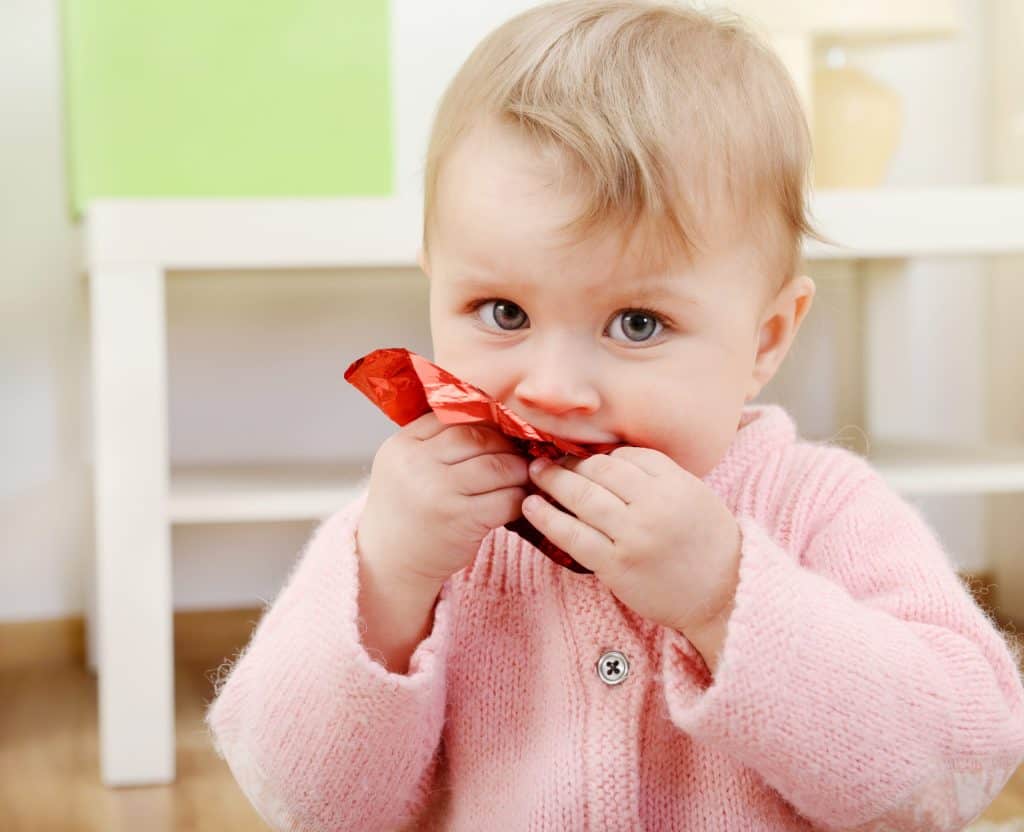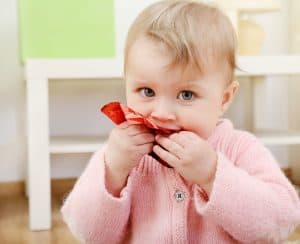Don’t eat that!

Taking the bite out of choking, poisoning, and system-traveling hazards
Babies and toddlers often explore their world using their mouths, where we’ve seen them place fingers, toes, dog food, toys, insects, and other benign objects. Most of these aren’t cause for alarm but in addition to choking dangers small items can cause life-threatening problems if they are swallowed. Commonly ingested items that can cause medical emergencies include coins, button batteries, toys, toy parts, magnets, safety pins, screws, marbles, and bones.
“Any difficulty breathing or difficulty swallowing, change in behavior or drooling after an incident means the child should be evaluated in an emergency department right away,” explains Hennepin Healthcare pediatrician Dr. Krishnan Subrahmanian. “If a child swallows – or is suspected of swallowing – a sharp object, button batteries, super-absorbent polymers or magnets, that too requires a trip to the emergency department.”

Dr. Subrahmanian says that even if someone suspects that an item of concern was swallowed, it’s essential that the child is examined right away to rule out that ingestion has occurred.
“As long as the child has not swallowed a toxic, sharp, magnetic or obstructive item, and is not exhibiting alarming symptoms, a visit to the child’s pediatrician for an evaluation and possibly an x-ray the following day is appropriate,” says Dr. Subrahmanian. “The doctor will evaluate where the object has gone in the gastrointestinal tract and whether it needs to be removed.”
But what about some other strange things that kids might chew and swallow? Like gum wrappers, ribbon, cardboard – a plastic straw, or even the corner of a potato chip bag? Or what about a pet goldfish?
“As long as it’s nontoxic, watch and wait for it to pass, but if the child exhibits signs that something is wrong or it doesn’t pass, they should be examined.”
After any concerning swallowing episode, symptoms to watch for include:
- Difficulty or refusal to eat
- Vomiting
- Pain on eating
- Drooling
- Difficulty breathing, choking, and abnormal sounds when breathing
Eliminating the risk of your child eating small items that weren’t meant for consumption is the best way to avoid trouble.
“We suggest that families walk around – or crawl so that they can see what babies can see,” explains Dr. Subrahmanian. “If any object can be placed inside a cardboard toilet paper roll, pick it up and put it out of reach.”
And of course, making sure your child is properly supervised at all times is essential, he warns.
“Because even though nontoxic, a bite of something larger than a toilet paper roll can be tempting for curious little ones using their mouths to explore their world, and can still cause problems.”
Families should call the Minnesota Poison Control System immediately at 1-800-222-1222 for all poison emergencies and questions about the ingestion of any medication, household products, plant or chemical. Families can always call 612-873-6963 to speak to a triage nurse for further guidance or if they have any additional questions or concerns.
Seattle Children’s Hospital has posted a good resource that explains some of the common harmless items kids may consume at Swallowed Harmless Substance (seattlechildrens.org).

